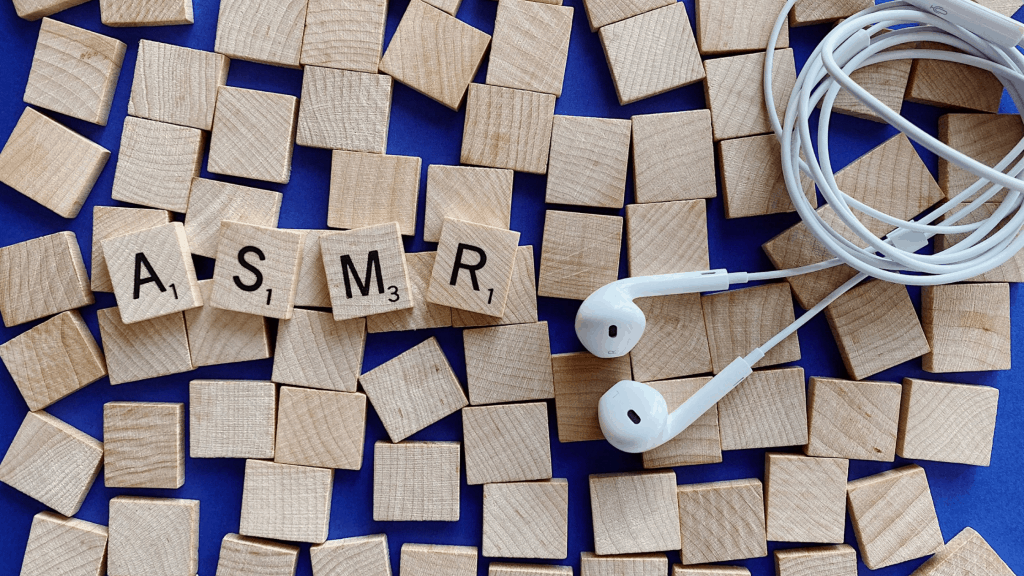
Almost all of us have experienced a pleasing tingling sensation once in a while in our lifetimes. Or maybe you’ve heard someone talking about it. This feeling often occurs when someone massages your scalp gently or tries to whisper in your ears.
How does this sensation always make you feel? Does the tingling running down your spine please you? Is it positive in your relaxation process? Actually, the extent of this feeling may vary from one person to another and the factor that’s triggering it.
However, its often associated with a blissful, tingling, and soothing sensation, commonly referred to as the Autonomous Sensory Meridian Response (ASMR). This article aims to comprehensively educate you about ASMR, various factors that can trigger it, its benefits, ASMR tips and tricks, and other helpful information about this relaxation approach to maximize your ASMR experience.
ASMR History

Discovered only a decade ago, ASMR has become surprisingly popular than some relaxation methods. It was coined by a female known as Jennifer Allen after creating a Facebook group in 2010 to link with other people who used to feel the tingling sensation like her.
She came up with a group name that was impersonal and clinical, and people were okay using it. With this group, Jennifer connected with many other individuals who felt this feeling but didn’t understand it too.
Most researchers have been researching more about ASMR lately to determine if it’s a genuine psychological experience and its benefits. Most people who experience it admit that it helps them with sleeping, de-stressing, anxiety, and relaxation.
How to know you’re experiencing ASMR

Some people can’t experience ASMR, but those who do explain it in a way that makes you wish to undergo it instantly. It’s usually a tingling, happy, and calming sensation that occurs in response to particular audio, visual stimuli, or personal attention from someone they adore.
You’ll know you’re experiencing this feeling when you have a shivering sensation or chills due to various stimuli settings. For example, when you see, hear, touch, or smell something unique/personal to you. People experience ASMR in response to different stimuli.
A brushing sound or haircut can make you have tingles, but these triggers may not work for someone next to you. It’s essential to find your ASMR trigger for easy and more pleasant relaxation.
Effective ASMR triggers

As mentioned earlier, ASMR triggers can vary with someone. As young kids, we often sought this trigger from whispering to one’s ear. Some say massaging their heads makes them get ASMR tingling and relax.
If these techniques don’t work for you, don’t despair, there are many other ways to generate this feeling; you just need to find one working for you. You can evoke ASMR triggers from a sense of touch, sight, touch, and smell.
Here are various ASMR triggers you can try:
- Humming
- Chewing
- Crinkling paper
- Intense eye contact
- Whispering
- Massage
- Tapping
- Teacher scribbling on the board
- Typing
- Personal attention
- Stirring food
- Folding towels
- Sluggish and repetitive movements
Benefits of ASMR

ASMR has myriad benefits to people experiencing and practicing it. It can help to overcome stress, anxiety, and insomnia. It’s also an effective meditation remedy today. Statistically, about 12% of American grownups mediate.
ASMR provides a more effective strategy to focus and calm down. Some of the many benefits of ASMR include:
- Aids sleep
- Improve one’s moods
- Relives pain, particularly for chronic patients
- Lowers stress
- Help easy coping of specific conditions like depression and anxiety
How ASMR works

ASMR normally occurs when watching or listening to an audio or video with your trigger. As you listen or watch the trigger, you’ll begin sensing a tingling feeling in your head, which quickly spreads down your spine and throughout your body.
Although these triggers usually vary from person to person, they have one thing in common; they’re all silent and intimate in nature. Today, there are millions of ASMR videos on YouTube to help enhance your ASMR experience.
These videos are usually 15 minutes-3 hours long to provide more relaxation and focusing time when you watch them. Examples of these videos are brushing sound, application of nail polish, and haircut simulation.
ASMR and Mindfulness

Since ASMR is a new phenomenon, there’s no much research on it. In some way, ASMR can significantly affect one’s mindfulness. A study exploring the relationship between these two phenomena indicated that individuals who experience ASMR have mindfulness characteristics than those who don’t.
However, how these two processes occur is usually different. With mindfulness, you need to concentrate physically and mentally to feel the flow of energy and relaxation, but ASMR doesn’t involve any task engagement; it’s just pure relaxation.
However, both techniques are associated with energy flow and tinging sensations. The main difference is ASMR is for relaxation, while mindfulness meditation is for awareness.
Mindfulness is known to help with de-stressing, insomnia, and mood improvement. A study conducted in 2018 indicated that people who watched ASMR videos significantly reduced their psychological and physiological stress signs.
Mindfulness, Zen Meditation, and ASMR

Zen meditation, mindfulness, and ASMR are all effective ways of relaxing and finding inner peace. While mindfulness meditation focuses on particular objects to concentrate on, zen meditation focuses on the overall awareness that reveals the workability and clarity of the innate mind.
You can incorporate mindfulness while practicing zen meditation. Just like ASMR and mindfulness, zazen helps to improve moods, relieves stress, anxiety, and aid relaxation. Today, many sources offer education about this form of relaxation, including online platforms, learning programs, and books.
Tips to help you experience a top-notch ASMR experience

Experiencing ASMR is one of the most enjoyable things to happen to you. However, they can rarely occur and last for shorter durations if you don’t know how to trigger and respond to them.
Here are some effective tricks to help you get full ASMR-triggered relaxation benefits:
1. Knowing your trigger(s)
We usually respond in different ways to ASMR causes. Paying more attention to how you feel, hear or see tingly things can help you settle for a more pleasurable ASMR trigger. If you find one, embrace it, and use it whenever you want to relax.
2. Practicing solo
Practicing ASMR alone can help you focus more and find what triggers your ASMR faster.
3. Use ASMR videos
The internet has millions of different ASMR types. After knowing your trigger, it’s best to find videos related to it to help you focus.
Conclusion
If you usually experience ASMR, don’t take it as a weird thing; instead, you can use that opportunity to relax and find innate peace. More research is being conducted to discover more about the therapeutic benefits of this process.
In the meantime, you can use ASMR to relieve stress, anxiety, depression, insomnia symptoms and aid your relaxation.
Recent Posts
The Role of Senior Living Placement Services in Enhancing Quality of Life for Seniors
How can seniors find the best place to live as they get older? Choosing the right place is important for their health and happiness - senior living placement services help by finding the perfect...
Understanding the Concept of a Gift from God: A Spiritual Exploration
When we think about gifts, we often picture tangible items wrapped nicely in colorful paper. But a gift from God is different. It isn't something you can hold or touch. Instead, it's something...
